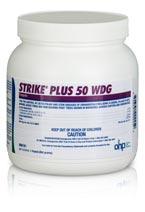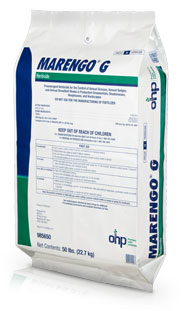Go to Cultivate 2014 – For FREE!
March 24, 2014
If you have never been to the OFA Short Course in Columbus Ohio, then do something different for your business in 2014 and check it out. With a new name CULTIVATE, and an entire tour devoted to nursery production, this always well-attended show offers nursery growers the latest production techniques and the hottest new varieties.
We believe so strongly that this is a must attend event, Nursery Management, AmericanHort and OHP have teamed up and are sending FIVE NURSERY GROWERS to Cultivate 2014 – on us! Want to go? Simply fill out the application below and tell us why you should be one of the five nursery management professionals we should send to Cultivate 2014!
If you are one of the five chosen, NM, AmericanHort and OHP will pick up the cost of an ALL ACCESS PACKAGE for you PLUS a spot on the Saturday Nursery Production Tour (value $505). Package includes unlimited educational sessions and access to the trade show, New Varieties & Products, Cultivate Happy Hour, and all networking and social events, and Nursery Production Tour. We will also contribute $1,000 towards your total travel costs.
Entries must be submitted by May 31, 2014. Winners will be notified by email.
Brought to you by:
OFA & ANLA join together, now AmericanHort
October 3, 2013
COLUMBUS, Ohio — After two years of planning, the national trade organization to be formed through the consolidation of OFA – The Association of Horticulture Professionals and the American Nursery & Landscape Association (ANLA) is official. And it finally has a name: AmericanHort.
 Members of OFA and ANLA voted in overwhelming support of the consolidation of the two organizations into a new, national trade association to serve the entire horticulture industry. The announcement followed a 30-day open ballot and Saturday’s in-person vote for OFA’s members, held in Columbus, Ohio.
Members of OFA and ANLA voted in overwhelming support of the consolidation of the two organizations into a new, national trade association to serve the entire horticulture industry. The announcement followed a 30-day open ballot and Saturday’s in-person vote for OFA’s members, held in Columbus, Ohio.
“It’s what our members want,” said Mark Foertmeyer, who was announced as the chairman of the board for the new organization. The owner of Foertmeyer & Sons Greenhouse in Delaware, Ohio, and current president of OFA continued, “We have surveyed our members, spoken with them, and finally asked them to cast a ballot. Each time they told us they wanted a national association that unifies and serves the entire horticulture industry.”
The new trade association, named the American Horticulture Association, will be known as AmericanHort, and will begin operations by Jan. 1. The mission of AmericanHort is to unite, promote, and advance our industry through advocacy, collaboration, connectivity, education, market development, and research.
The dues structure for the new organization has not yet been finalized. Members of OFA and ANLA as of December 31, 2013 will automatically become members of the new association in January 2014. Membership will continue through June 30, 2014. The dues renewal process for the new association will begin in the spring for the membership year beginning on July 1, 2014. The new dues structure will allow members to choose from an a la carte menu, said Michael Geary, CEO of OFA and vice president of ANLA. Dues will no longer be based on business size or revenues.
“We will have the largest national nursery, greenhouse, and garden retail membership of any horticulture association in the United States,” said the organization’s inaugural vice chairman, Dale Deppe, owner of Spring Meadow Nursery in Grand Haven, Mich., and current vice president of ANLA. “Those communities will join together with breeders, distributors, interior and exterior landscape professionals, florists, students, educators, researchers, manufacturers, and all who are part of the supply chain to represent our industry with one, strong voice and a greater base of volunteer, staff, and financial resources,” Deppe added.
Michael Geary, CAE, who will continue as the chief staff executive, said the new association will maintain all of the current staff in both the Columbus, Ohio and Washington, D.C. offices.
“By including research, industry promotion, regulatory and legislative efforts, education, and countless opportunities for buyers and sellers to interact, we will deliver a broad range of business-based services to our industry and be the quintessential resource for the horticulture industry as a whole,” Geary said.
“I have made long-term dues investments in both organizations,” said Gary Mangum, CEO of Bell Nursery, headquartered in Elkridge, Md., and a current member of both ANLA and OFA. “ANLA is the leader in legislative and regulatory representation for our industry, and OFA offers outstanding educational programs and runs the largest horticultural trade show and convention in North America. With the addition of programs like the Next Level conference and the significant expansion of the retail segment at the 2014 Short Course, we can already see the benefits of these two associations joining together. It will be better for my business, and it is a true win for our industry. Congratulations to our leaders and members who made this historic decision.”
The new organization will represent the whole of the plant industry, including breeders, greenhouse and nursery growers, garden center retailers, distributors, interior and exterior landscape professionals, florists, students, educators, researchers, manufacturers, and all of those who are part of the industry supply chain. The association will have its primary office in Columbus, Ohio and an office in Washington, D.C. to facilitate government relations and research activities.
The inaugural board of directors was appointed by the legacy organizations. For the first year, the board will have equal representation from OFA and ANLA. The board includes the following leaders:
- Chairman of the Board – Mark Foertmeyer, Foertmeyer & Sons Greenhouse, Delaware, Ohio
- Vice Chairman of the Board – Dale Deppe, Spring Meadow Nursery Inc, Grand Haven, Michigan
- Treasurer – Lisa Graf, Graf Growers, Akron, Ohio
- Past Chairman of the Board – Mike McCabe, McCabe’s Greenhouse & Floral, Lawrenceburg, Indiana
- Past Chairman of the Board – Bob Terry, Fisher Farms, Gaston, Oregon
- President & CEO – Michael V. Geary, CAE, AmericanHort, Columbus, Ohio/Washington, DC
- Joe Burns, Color Burst, Grayson, Georgia
- Teri Cantwell, Bates Sons & Daughters Inc, Lake Placid, Florida
- Tom Demaline, Willoway Nurseries Inc, Avon, Ohio
- Bob Jones Jr, The Chef’s Garden, Huron, Ohio
- Terri McEnaney, Bailey Nurseries Inc, St Paul, Minnesota
- Dan Mulhall, Mulhall’s Nursery, Omaha, NE
- Morris Newlin, New Garden Landscaping & Nursery, Greensboro, North Carolina
- Cari Peters, JR Peters Inc, Allentown, Pennsylvania
- Sid Raisch, Horticultural Advantage, Hillsboro, Ohio
The organization will have a new committee structure in place by the end of the year.
“We want the governance structure of the committees to be simple,” Geary said. “We’re creating a new system in terms of how we interact with members.”
That includes an “enhanced strategy” to connect members with state and regional associations. ANLA’s Lighthouse program will continue, which includes some 13,000 people throughout those “partner” organizations, Geary said.
OHP introduces Strike® Plus Fungicide
September 27, 2013
OHP, Inc. is pleased to announce the immediate availability of Strike Plus Fungicide to the production  ornamentals market through authorized distributors.
ornamentals market through authorized distributors.
Strike Plus contains two active ingredients for dual modes of action (MOA), giving more broad-spectrum control of troublesome foliar diseases.
“Strike Plus is a broad-spectrum fungicide that can be used both inside and outside and as preventive or curative. The user simply adjusts the rate accordingly,” notes Dr. Carlos Bográn, OHP technical manager.
The product contains triadimefon, the active ingredient in Strike® 50 WDG fungicide, plus trifloxystrobin, the active ingredient in Compass® O fungicide.
With the combination of a sterol inhibitor (triadimefon) and a strobilurin (trifloxystrobin), Strike Plus provides comprehensive control of many diseases including powdery mildew, rusts, anthracnose, leaf spots, botrytis, boxwood blight, and others.
The combination lessens the high resistance potential that users may face when repeatedly using a strobilurin fungicide by itself.
“If resistance to strobilurin chemistry is an issue, growers can mitigate that with the use of Strike Plus,” notes Bográn. “It’s a good fit into a resistance management rotation.”
OHP will phase out Strike 50 WDG but will maintain federal and state registrations for a period of time so growers can use up existing stock.
OHP is a leading marketer of pest and weed control solutions to the production ornamentals market. For more information on Strike Plus, click here.
OHP introduces granular Marengo herbicide
September 16, 2013
OHP, Inc. has followed up its successful launch of Marengo® liquid pre-emergent herbicide with the introduction of Marengo G, a granular formulation with the same effective active ingredient, indaziflam.
introduction of Marengo G, a granular formulation with the same effective active ingredient, indaziflam.
Marengo G offers production ornamental growers many of the same features as Marengo SC including consistent plant safety, broad-spectrum weed control, and long-term residual.
The Marengo G label allows for application to containers in nurseries, and hoop and shade houses.
“We’re pleased to introduce a granular version of Marengo to the market after the successful launch of Marengo liquid,” notes Terry Higgins, OHP vice president and general manager. “Marengo G features all the benefits of indaziflam in an easy-to-apply granular formulation for over-the-top applications.”
Marengo G offers effective, long-term selective pre-emergent control of both broadleaf and grassy weeds with little effect on desirable plant species. The product does not volatilize and does not move in soil once watered-in after application.
“With the new formulation, growers in container and field nurseries may now use the product for over-the-top applications,” says Dan Stahl, OHP vice president of marketing and business development.
Marengo contains the first active ingredient from MOA (Mode of Action) Group 29. The active ingredient prevents weed seed germination by inhibiting cellulose biosynthesis.
California and New York state registrations are pending.
OHP is a leading marketer of pest and weed control solutions to the production ornamentals market. For more information on Marengo G, please visit http://www.ohp.com/Products/marengo_g.php
OHP re-launches Terraclor® 400 ornamental fungicide
April 20, 2013
OHP, Inc. announces the re-launch of Terraclor® 400 Ornamental Fungicide for users in greenhouses, nurseries, and shadehouses.
In addition, Terraclor 400 may be used on landscape and field grown ornamentals.
The economical liquid fungicide is widely used for control of tough diseases such as rhizoctonia, sclerontinia, and phyllostica.
Terraclor 400 can be sprayed, drenched, or used as a bulb soak on a variety of woody plants, bedding plants, bulb crops such as gladiolas, hyacinths, iris, tulips, and lilies. Terraclor 400 can be used on Southern Magnolia Trees for control of phyllostica cookeri.
The product may also be used as a soil drench on vegetable bedding plants grown in containers or beds including tomatoes, peppers, broccoli, and cabbage for control of rhizoctonia solani prior to transplanting in the field.
Terraclor 400 carries a 12-hour REI and a Caution signal word.
State registrations are pending and for more information click here.
OHP Inc. is a leading marketer of pest solutions to the production ornamental industry.